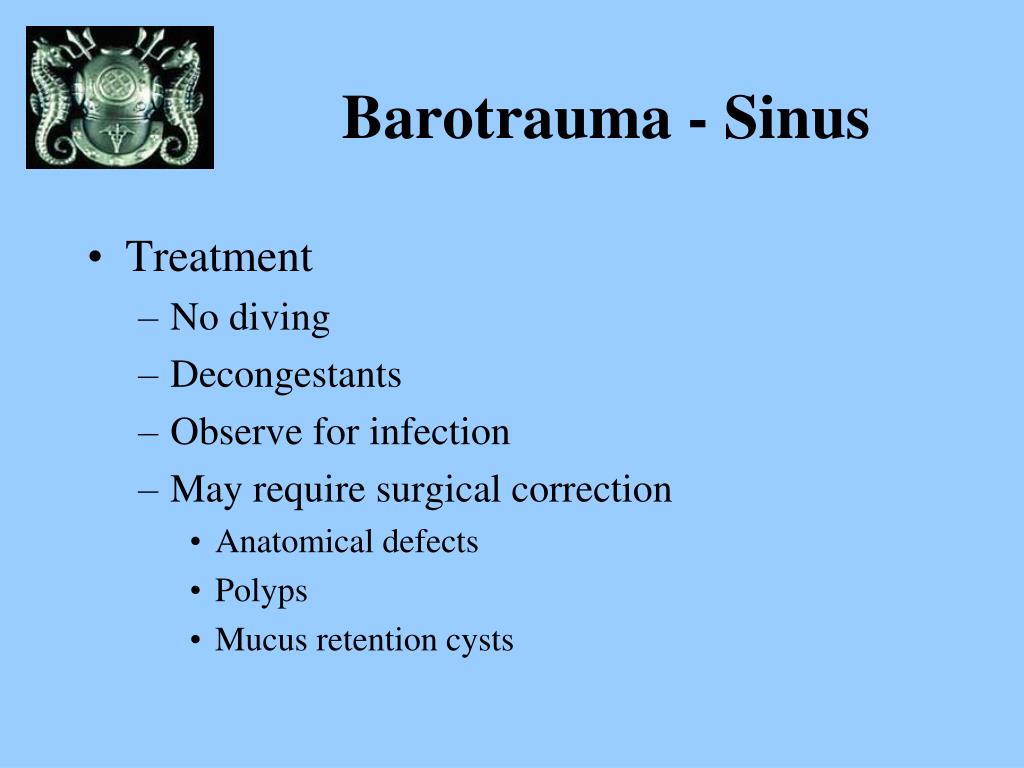


#Barotitis media middle ear barotrauma trial#
(See also Barotrauma Barotrauma Barotrauma is tissue injury caused by a change in pressure, which compresses or expands gas contained in various body structures. Pseudoep hedri ne for the prevent ion of barotitis media: A controlled clinical trial in und erwater divers. However, for a severe case of airplane ear, you might need to see a doctor. Self-care steps such as yawning, swallowing or chewing gum usually can counter the differences in air pressure and improve airplane ear symptoms. read more -air must move through the eustachian tube to equalize the pressure in the middle ear. Airplane ear is also called ear barotrauma, barotitis media or aerotitis media. The lungs, gastrointestinal tract, part of the face covered.

When outside air pressure changes suddenly-for example, during the ascent or descent of an airplane or a deep-sea dive Ear barotrauma (ear squeeze) Barotrauma is tissue injury caused by a change in pressure, which compresses or expands gas contained in various body structures. Normally, the eustachian tube, which connects the middle ear and the back of the nose, helps maintain equal pressure on both sides of the eardrum by allowing outside air to enter the middle ear. However, if these activities are necessary, a decongestant, such as phenylephrine nose drops or. Such activities should be avoided until the infection or allergy is controlled. Severe earache affects individuals of varying levels of social determinants of health as it is entirely a physiological phenomenon 3. If air pressure in the ear canal from outside air and air pressure in the middle ear change rapidly or are unequal, the eardrum can be damaged. People who have an infection or an allergy affecting the nose and throat may experience discomfort when they fly in a plane or dive. Airplane ear is also known as ear barotrauma, barotitis media or aerotitis media 1 5. The eardrum separates the ear canal and the middle ear.


 0 kommentar(er)
0 kommentar(er)
